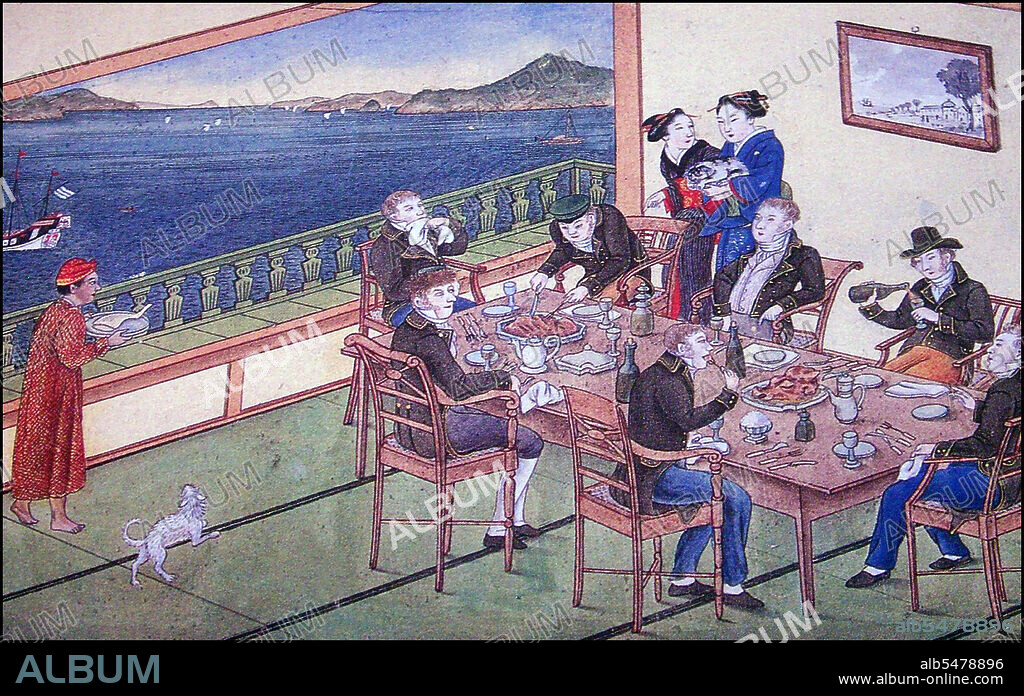alb5478896
Japan: A group of Dutch traders dining at Dejima Island, Nagasaki, c.1825. Philip Franz Von Siebold seated, centre, with his mistress, Kusomoto Taki (Sonogi) holding cat

|
Añadir a otro lightbox |
|
Añadir a otro lightbox |



¿Ya tienes cuenta? Iniciar sesión
¿No tienes cuenta? Regístrate
Compra esta imagen.
Selecciona el uso:

Título:
Japan: A group of Dutch traders dining at Dejima Island, Nagasaki, c.1825. Philip Franz Von Siebold seated, centre, with his mistress, Kusomoto Taki (Sonogi) holding cat
Descripción:
Traducción automática: Dejima (literalmente 'isla de salida'; holandés: Desjima o Deshima, a veces latinizado como Decima o Dezima) era una pequeña isla artificial en forma de abanico construida en la bahía de Nagasaki en 1634. Esta isla, que se formó cavando un canal a través de un pequeña península, se mantuvo como el único lugar de comercio e intercambio directo entre Japón y el mundo exterior durante el período Edo. Dejima se construyó para restringir a los comerciantes extranjeros como parte de la política aislacionista autoimpuesta de 'sakoku'. Originalmente construido para albergar a los comerciantes portugueses, se transformó en un puesto comercial chino y holandés desde 1641 hasta 1853. Cubriendo un área de 120 mx 75 m (9000 metros cuadrados o 0,9 hectáreas) más tarde se integró a la ciudad. 'Dejima Dutch Trading Post' ha sido designado sitio histórico nacional japonés.
Dejima (literally 'exit island'; Dutch: Desjima or Deshima, sometimes latinised as Decima or Dezima) was a small fan-shaped artificial island built in the bay of Nagasaki in 1634. This island, which was formed by digging a canal through a small peninsula, remained as the single place of direct trade and exchange between Japan and the outside world during the Edo period. Dejima was built to constrain foreign traders as part of the 'sakoku' self-imposed isolationist policy. Originally built to house Portuguese traders, it changed to a Chinese and Dutch trading post from 1641 until 1853. Covering an area of 120 m x 75 m (9000 square meters, or 0.9 hectares) it later became integrated into the city. 'Dejima Dutch Trading Post' has been designated a Japanese national historic site.
Crédito:
Album / Pictures From History/Universal Images Group
Autorizaciones:
Tamaño imagen:
5330 x 3348 px | 51.1 MB
Tamaño impresión:
45.1 x 28.3 cm | 17.8 x 11.2 in (300 dpi)


 Pinterest
Pinterest Twitter
Twitter Facebook
Facebook Copiar enlace
Copiar enlace Email
Email
